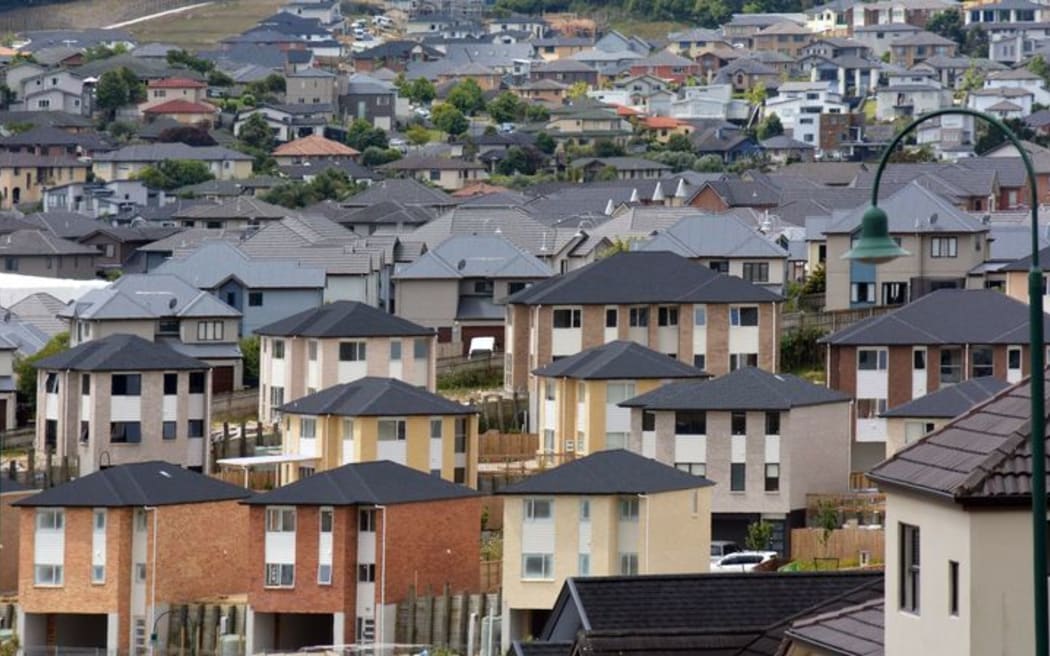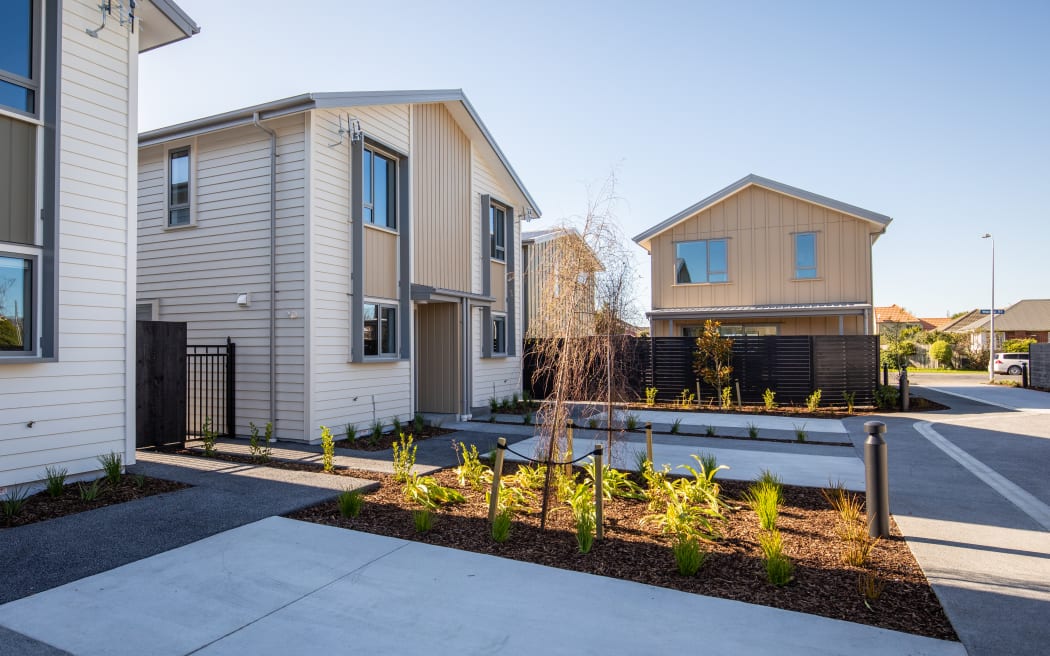Minister did not get advice on fire risks to intensive housing, OIA shows

The government promoted intensive housing despite the minister of housing receiving no advice on higher fire risks, such as difficulty escaping flames between buildings set close together, and difficulty running hoses to buildings.
Minister of Housing Megan Woods did not get advice on fire risk and housing intensification, despite officials being warned by Fire and Emergency about the risks, an Official Information Act response to questions from RNZ showed.
The risks were also flagged by the country's leading construction researchers, The Building Research Association (BRANZ), years ago.
"Our biggest concern remains the densification and potential clearances between buildings," FENZ told the Ministry of Business, Innovation and Employment (MBIE) last year.
"There is a risk that densification will increase risk to firefighters safely being able to access and fight fires."
FENZ last July showed MBIE a 14-page presentation about a Manukau fire where four houses close together were badly damaged as firefighters struggled to get down a long driveway and get enough water to them.
Read the presentation: FENZ case study of Manukau House fire (17MB)
None of that made it to the minister.
BRANZ laid out the basics back in 2018, stating: "Increased residential density brings additional challenges for Fire and Emergency. A larger number of people may have their life safety threatened, and access can become an issue."
These problems have begun actually emerging, FENZ told MBIE last year. They also told Auckland Council.
MBIE had been trying to raise fire resistance ratings between closer-together houses. But in May this year, the move for higher ratings failed due to industry opposition, though MBIE insists it is still trying.
FENZ voiced its concerns even though it had expected those higher ratings to come in: "Despite the increased fire resistance ratings, we are concerned with the boundary clearance," it told the ministry.
The "boundary clearance may not be sufficient for people from rear properties to escape past a burning building in the block".
Now, with the failure to agree on raising the fire resistance ratings, FENZ's concerns remain unmitigated.
Housing intensification has been a large policy move and generated thousands of pages of official advice on the huge ramifications for most of the population.
But this has not covered how the spread of fire becomes easier, as the task of firefighting becomes harder.

The OIA asked Woods for any and all advice. Her office responded with a single, 7-page briefing that mentioned fire just once, as a footnote: "The purpose of the Building Act 2004 includes ensuring ... people can escape in a fire."
The only other document it cited was a 111-page Ministry for the Environment report on housing law amendments, that once, on page 24, mentioned fire: councils had pointed out it was essential that changes did not take away their ability to set standards for 23 things, including "water supply for firefighting".
The OIA response did not mention the advice MBIE got from FENZ at all.
Read the OIA response documents from Minister of Housing Megan Woods:
OIA response, Minister Megan Woods, July 2023, 3p, (175K)
Ministerial briefing, 7p (369K)
RNZ asked Woods if she had done enough to ascertain public safety risks from the housing moves, and if she would take the same approach - of getting zero advice on fire - again if there were further intensification changes.
FENZ made a 6-page submission last year to MBIE on the resistance ratings and other better fire rules which the ministry had proposed.
"With the densification of houses increasing and the emerging theme of removing car parking requirements, it will become much more common to see multiple stacked multi-unit dwellings built side-by-side with minimal clearances," FENZ told MBIE.
"Fire and Emergency considers that reducing the boundary clearance from 5m (metres) to 1m for buildings such as adjoining townhouses and stacked multi-unit dwellings will provide additional risk for both neighbours escaping a fire and also for firefighters having to run hoses and carry equipment to rear properties for firefighting purposes.
"The concerns we have with means of escape mostly relate to the potential close proximity of stacked multi-unit dwellings with a single external escape path."
Read the FENZ OIA response documents:
FENZ Protection From Fire submission on the MBIE Building Code update consultation, 2022, 6p, (751K)
FENZ OIA response on MDRS/housing intensification, 2p (282K)
Research here and overseas backed that up.
"Progress has been made in preventing fires, which has contributed to a decrease in the number of casualties. But the risk of death once a fire does occur has not improved," a Canadian study in 2020 said. Canada had experienced a lot of densification.
In 2018, BRANZ said longer escape routes from multi-storey housing meant better alarm systems were needed. (MBIE had a requirement for interconnected smoke alarms approved, which will come into effect from this November.)
Read the full document: Medium Density Housing Fire Safety Facts - BRANZ (1.7 MB)
Larger housing developments need places for fire trucks to park within 20m, BRANZ said.
"The time required to investigate the location of a fire and set up firefighting hoses also increases as building size increases."
If a hose needed to be longer than 75m, then a building should have its own hydrants - FENZ confirmed this was still the case.
At the April 2022 Manukau housing fire that FENZ did a presentation on to MBIE and the council, firefighters got only half the water pressure they needed from partially-accidentally-shut hydrants that were almost 300m away.
Construction also raises the fire risks, especially in denser developments.
BRANZ [https://www.buildmagazine.org.nz/index.php/articles/show/closer-housing-and-construction-site-fire-safety-risk
this year reported] "densification increases the potential consequences" of a fire breaking out during building work.
Auckland's intensification has been put on hold for a year as authorities consider the impact of this year's storms on housing in flood zones.